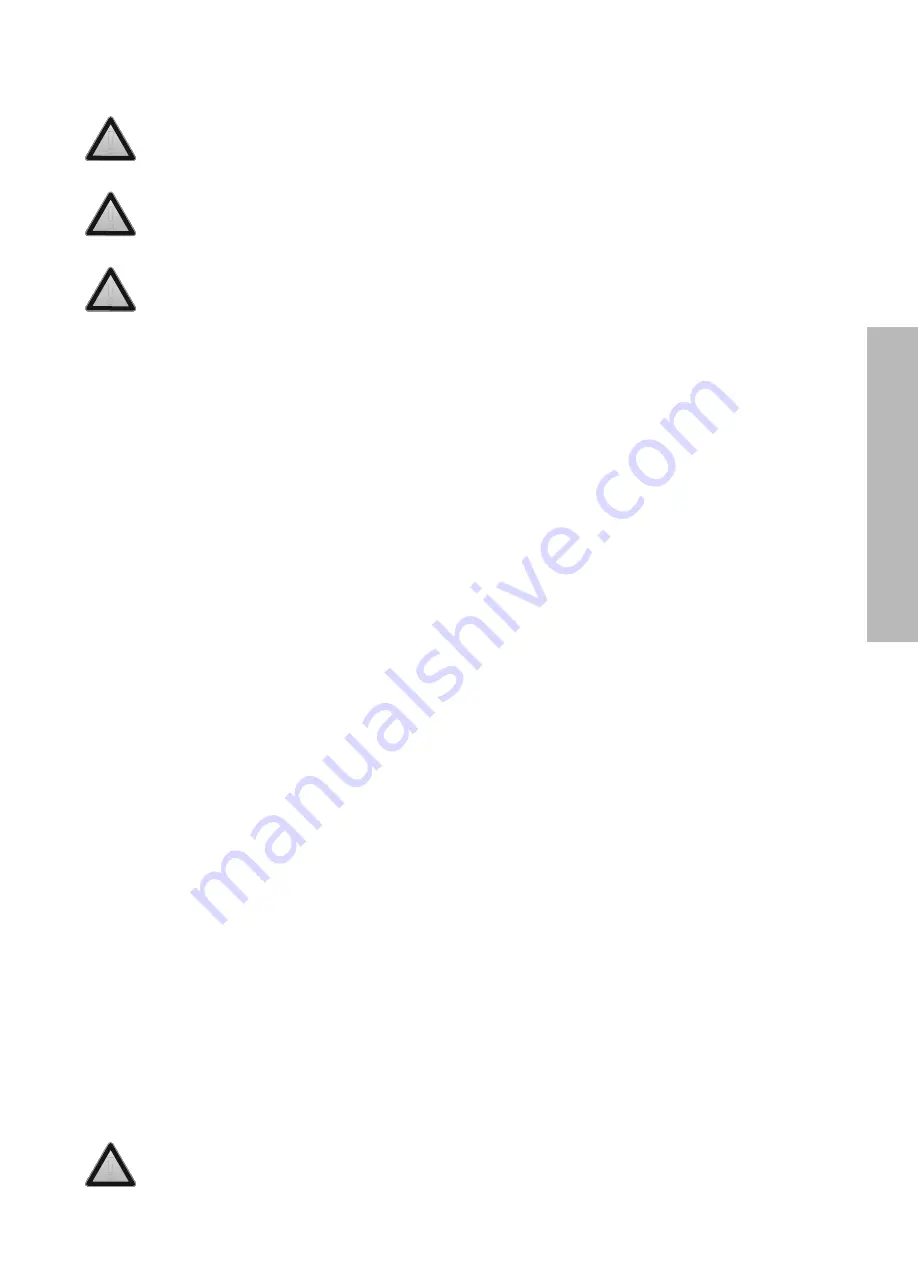
21
GB
Do not put any paraffin-containing logs in your stove. When the door is closed, the high heat will
melt the paraffin from the logs too quickly. The polluted flue gasses which consequently develop will
deposit on and burn in the glass of your stove and cannot be removed later.
Do not use any wood that is painted, impregnated, glued together or processed in any other way. The
flue gases are very harmful to the environment and may affect your stove. It is also prohibited to burn
plastics and other waste matter due to poisonous smoke development.
Wood species and storage
You can use all kinds of woods as fuel as long as it is clean, split and dry. Hardwood like oak, beech and
birch burn slowly, give off much heat and form charcoal easily. Softer woods like spruce, fir and poplar
give more flames but less heat and less charcoal.
The best place to store timber is in a windy spot but sheltered from the rain. This is how the logs can
dry in a natural way. Pile the logs on an old pallet or a frame to let the wood dry from underneath and
to prevent the lower logs from being in contact with water.
The best way to burn your stove
All WANDERS’ stoves are designed so that they give a maximum output. A well-lit wood-burning stove can
produce a yield of about 75%. This means that you need less wood for the same amount of heat. Moreover, a
well-lit stove produces less smoke pollution. Below are a few tips to give you optimum pleasure:
t
Always burn your stove with its door closed; this will improve the output within 8 to 10 times. When the
door of the stove is open, the chimney will draw more air than is needed for proper combustion. The rela-
tively cold air will cool the fire. It will also preclude fire damage by any sputtering sparks, especially from
softwood.
t
Do not put more than 3 logs on the fire at one time. Too much fuel at one time thwarts efficient combus-
tion and burdens the environment unnecessarily.
t
Let extra air into your wood stove only when you start firing the hearth. A constant oversupply of air will
make the logs burn more rapidly while your hearth will not have enough time to give off its heat to the
room; if you overheat the stove, it may get damaged.
t
Ventilate the space well when you have the stove on. A crackling fire has a minimum air consumption of 25
cubic metres an hour. Never put on your cooking hood when you have a stove burning in the same space.
t
Be careful with lighting the stove when it is foggy or when there is no wind outside. There is hardly any
draught in the cold chimney when the weather is calm. Since smoke is heavier than air there is the chance
of smoke streaming into the room. In foggy weather, the smoke from the chimney (outside) cools quickly
and may descend and become a nuisance in your neighbourhood.
t
Don’t smother the fire suddenly with water, but let it burn out. The materials inside the stove may deform
or crack as a result of sudden or great differences in temperature.
Chimney and flue
The chimney is the most important part of your wood-burning hearth.
When the chimney is right it will not distribute any smoke into your room, leave any deposit on the glass pane
or create bad combustion. Before starting the installation of the stove, your installer or a qualified chimney
sweep must check whether the chimney flue has a diameter of at least 150 millimetres over the entire length,
and whether the channel is clean, smooth and leak-proof.
Chimney with a proper draught
Warm air wants to ascend. This is the principle of every chimney. It helps when the wind near the
chimney mouth draws the air from the chimney.
!
!
!
!
















































